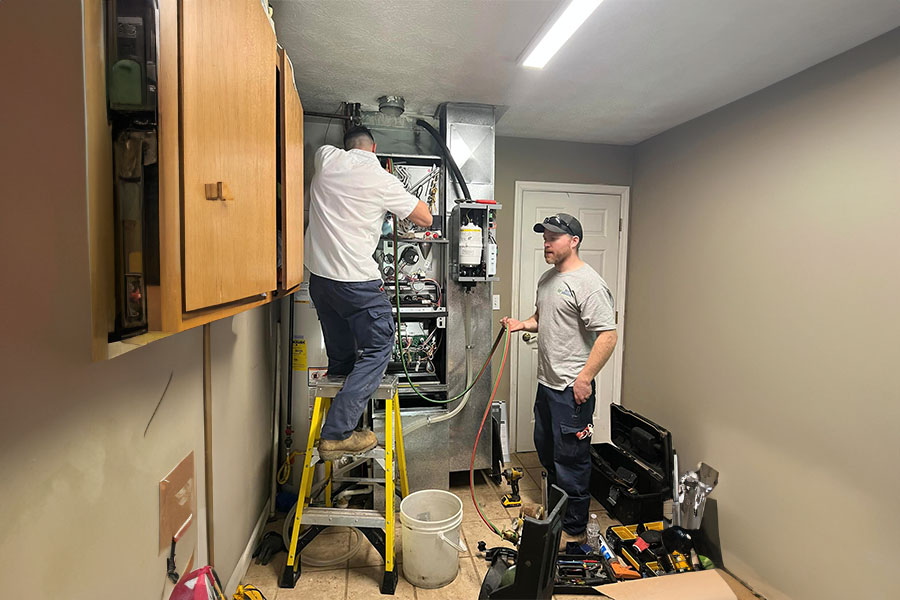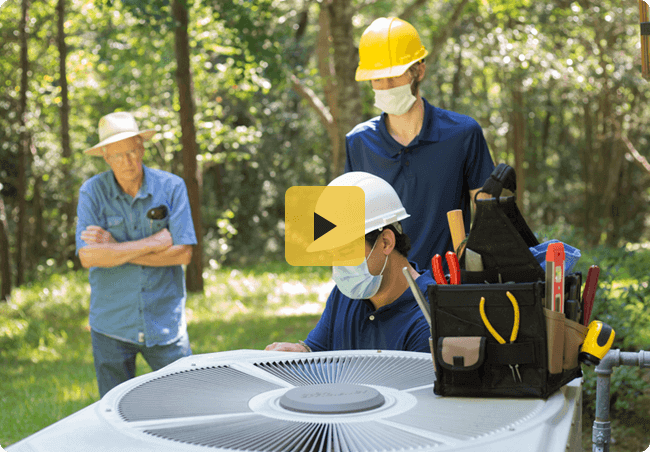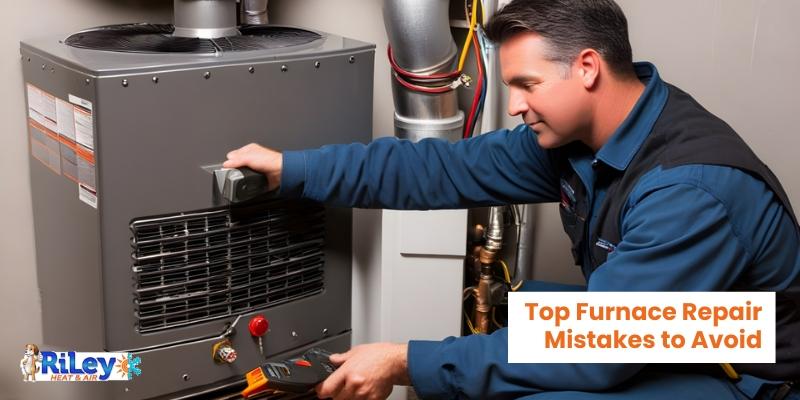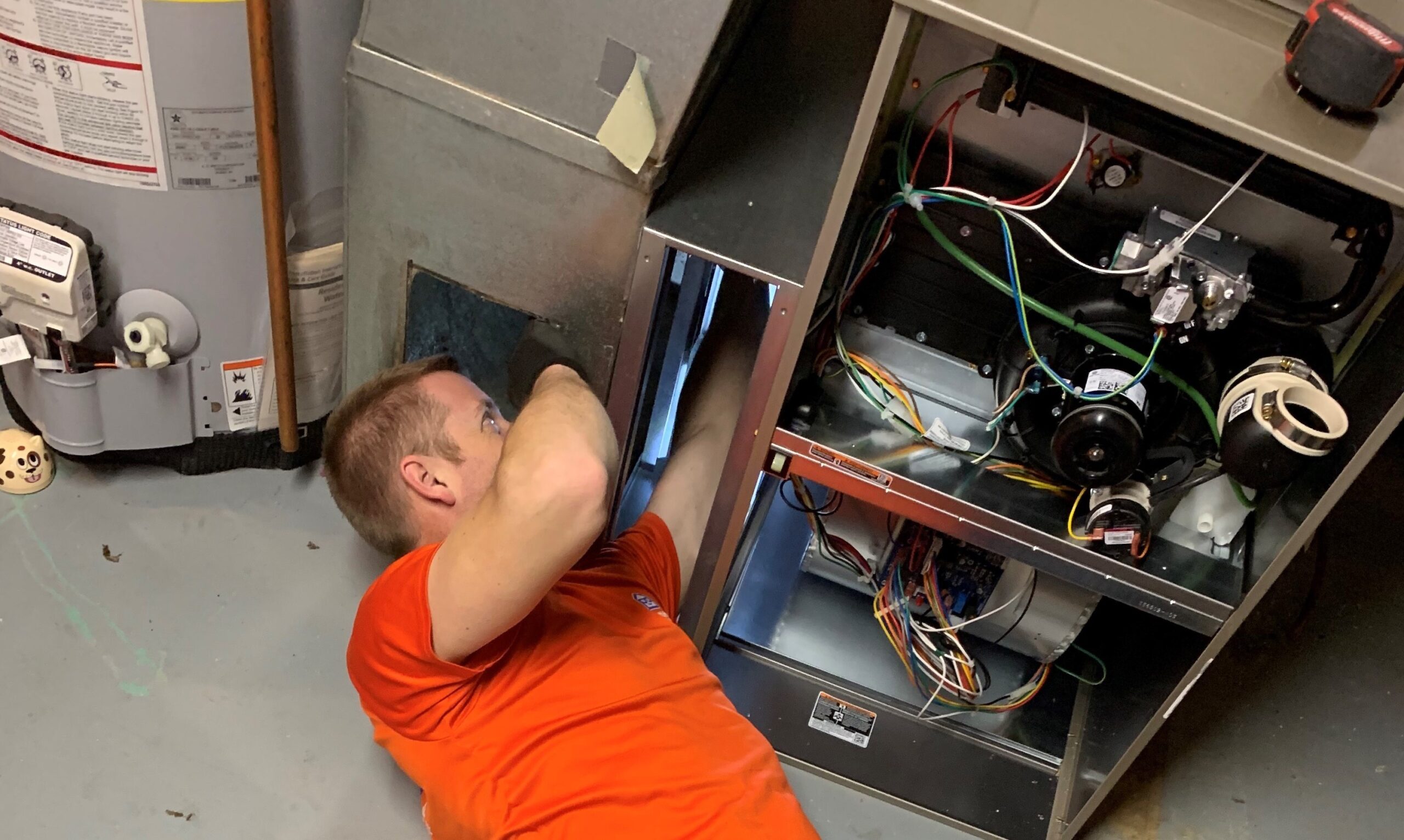Is It Best Furnace Repair Clackamas Hvac

Many homeowners in Clackamas County rely on their furnaces to keep them comfortable during the chilly months. But what happens when your furnace suddenly stops working? Facing a cold home can be stressful, especially if you're unsure where to begin troubleshooting. This guide will walk you through some common furnace problems, providing a step-by-step approach to diagnosing the issue and performing simple, safe DIY fixes. We'll also highlight when it's time to call in the professionals at Clackamas HVAC for furnace repair.
Understanding Common Furnace Problems
Before we dive into troubleshooting, let's identify some of the most frequent furnace issues that homeowners encounter:
- No Heat: The furnace turns on, but no warm air comes out of the vents.
- Furnace Won't Turn On: The furnace doesn't respond at all when you turn up the thermostat.
- Short Cycling: The furnace turns on and off frequently, without fully heating the home.
- Blower Runs Constantly: The blower fan runs continuously, even when the furnace isn't actively heating.
- Strange Noises: Unusual sounds like banging, rattling, or whistling coming from the furnace.
- Pilot Light Issues (for older furnaces): The pilot light won't stay lit or goes out frequently.
We'll focus on the first three, as they are most commonly addressed through initial DIY troubleshooting.
Troubleshooting a Furnace That's Not Producing Heat
This is a very common complaint. Here's how to approach it:
Step 1: Check the Thermostat
This might seem obvious, but it's always the best place to start. Ensure your thermostat is set to "Heat" and that the temperature is set a few degrees higher than the current room temperature. A common mistake is simply forgetting to switch the thermostat from "Cool" to "Heat" when the weather changes.
Check the batteries in your thermostat, especially if it's a digital model. Low batteries can cause erratic behavior or prevent the thermostat from communicating with the furnace.
Step 2: Inspect the Air Filter
A dirty or clogged air filter is a frequent culprit behind many furnace problems, including lack of heat. A clogged filter restricts airflow, causing the furnace to overheat and potentially shut down. It also reduces the furnace's efficiency and can lead to more serious issues down the line.
Locate your air filter. This is typically found near the furnace itself, often in a slot or compartment on the side or bottom of the unit. It may also be located where your return air duct enters the furnace.
Remove the filter and examine it. If it's visibly dirty or clogged with dust and debris, it needs to be replaced. Replace the filter with a new one of the correct size. The size is usually printed on the filter frame. Note the direction of the airflow arrow on the filter and install the new filter with the arrow pointing in the direction of the airflow towards the furnace.
Step 3: Check the Furnace Power Switch
Most furnaces have a dedicated power switch, often located on the side of the unit or on a nearby wall. It looks like a standard light switch.
Make sure the switch is in the "On" position. It’s surprisingly easy to accidentally bump this switch and turn off the furnace. Flip the switch to the "Off" position, wait a few seconds, and then flip it back "On".
Step 4: Inspect the Gas Valve
If your furnace uses natural gas or propane, there will be a gas valve controlling the fuel supply. Confirm that the gas valve is in the "On" position. The valve is usually located on the gas supply pipe near the furnace. The handle should be parallel to the pipe to indicate it's open.
Important Safety Note: If you smell gas, immediately leave your home and call your gas company or the fire department from a safe location. Do not attempt to troubleshoot the furnace yourself if you suspect a gas leak.
Step 5: Check the Circuit Breaker
A tripped circuit breaker can cut power to the furnace. Locate your electrical panel and check the breaker labeled "Furnace" or "HVAC."
If the breaker is tripped (in the "Off" or middle position), reset it by flipping it fully to the "Off" position and then back to the "On" position.
Troubleshooting a Furnace That Won't Turn On
If your furnace isn't responding at all when you adjust the thermostat, try these steps:
Step 1: Thermostat Check (Again!)
Yes, check the thermostat again! Make sure it’s set to “Heat,” the temperature is higher than the current room temperature, and that the batteries are fresh. Even if you checked it before, it's worth a second look.
Step 2: Power Switch and Circuit Breaker
Just like with the "no heat" problem, verify that the furnace power switch is "On" and that the circuit breaker hasn't tripped.
Step 3: Check the Emergency Shut-Off Switch
Some homes have an emergency shut-off switch located near the furnace or at the top of the basement stairs. Ensure this switch is also in the "On" position. This is a safety feature designed to quickly shut off the furnace in case of an emergency.
Step 4: Inspect the Furnace Door Switch
Most modern furnaces have a safety switch that prevents the unit from operating when the blower door is open. This switch is usually located near the blower compartment. Make sure the blower door is properly closed and secured. If the door isn't making good contact with the switch, the furnace won't turn on.
Troubleshooting a Furnace That's Short Cycling
Short cycling, where the furnace turns on and off repeatedly, can be caused by several factors:
Step 1: The Air Filter (You Guessed It!)
A clogged air filter is a very common cause of short cycling. As mentioned earlier, restricted airflow can cause the furnace to overheat and shut down prematurely. Replace the filter with a clean one.
Step 2: Thermostat Placement
Ensure your thermostat is not located near any heat sources such as lamps, direct sunlight, or kitchen appliances. These heat sources can artificially raise the thermostat's temperature reading, causing the furnace to shut off before the rest of the house is adequately heated.
Step 3: Overheating
If the furnace is consistently overheating, it could be a sign of a more serious problem. Listen for any unusual noises coming from the furnace before it shuts down. If you suspect overheating, turn off the furnace and call a professional.
When to Call Clackamas HVAC for Professional Furnace Repair
While these DIY troubleshooting steps can resolve many common furnace issues, there are times when it's best to call in the experts at Clackamas HVAC. Attempting repairs beyond your skill level can be dangerous and could potentially damage your furnace further.
You should call a professional HVAC technician if:
- You smell gas: As mentioned earlier, this is a serious safety hazard. Evacuate your home and call your gas company or the fire department immediately.
- You suspect a gas leak: Even if you don't smell gas, any suspicion of a leak warrants a professional inspection.
- The furnace makes loud or unusual noises: Banging, rattling, screeching, or whistling sounds can indicate mechanical problems that require professional attention.
- The furnace continues to malfunction after you've tried the DIY fixes: If you've followed the troubleshooting steps outlined above and the furnace still isn't working properly, there's likely a more complex issue that needs to be addressed by a qualified technician.
- You're uncomfortable working with electricity or gas: It's always best to err on the side of caution. If you're not comfortable working with electrical components or gas lines, leave the repairs to the professionals.
- Your furnace is old: Older furnaces may require more frequent repairs and may be less efficient than newer models. A professional technician can assess the condition of your furnace and advise you on whether it's time for a replacement.
- You have a complex furnace system: Furnaces with multiple zones, advanced controls, or unique configurations may require specialized knowledge to diagnose and repair.
By following these troubleshooting steps, you can often identify and resolve common furnace problems yourself. However, remember to prioritize safety and don't hesitate to call Clackamas HVAC when needed. Regular maintenance, including replacing your air filter regularly, can help prevent many furnace issues and keep your home comfortable all winter long.
Remember, this guide is for informational purposes only and should not be considered a substitute for professional advice. Always follow safety precautions and consult with a qualified HVAC technician for any complex or potentially dangerous repairs.










